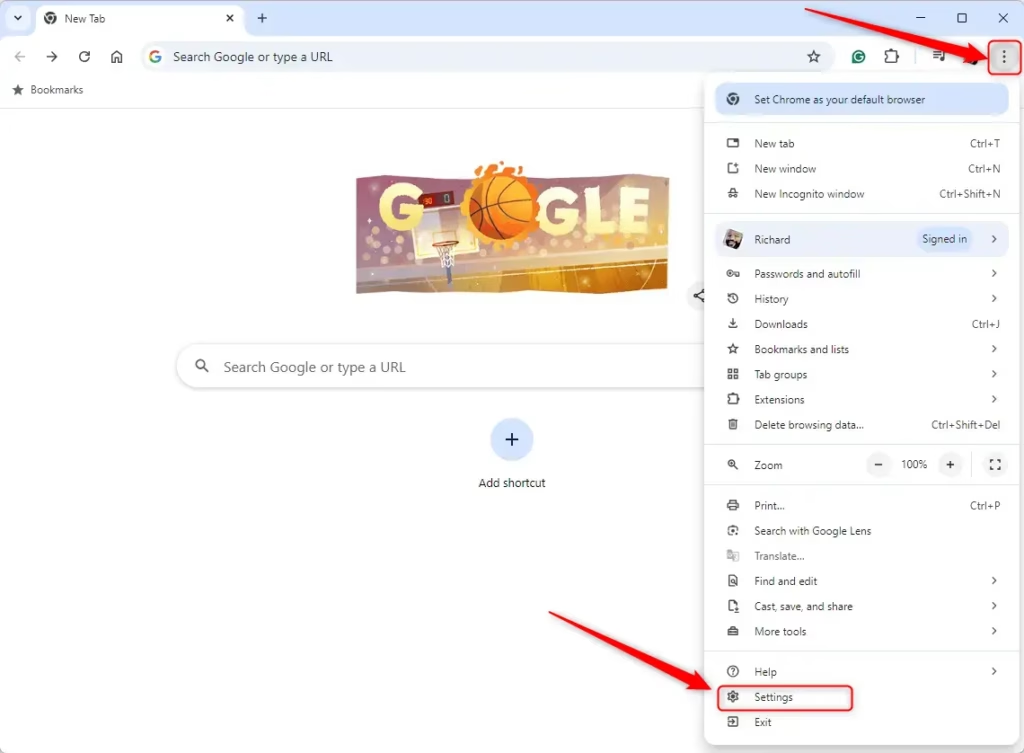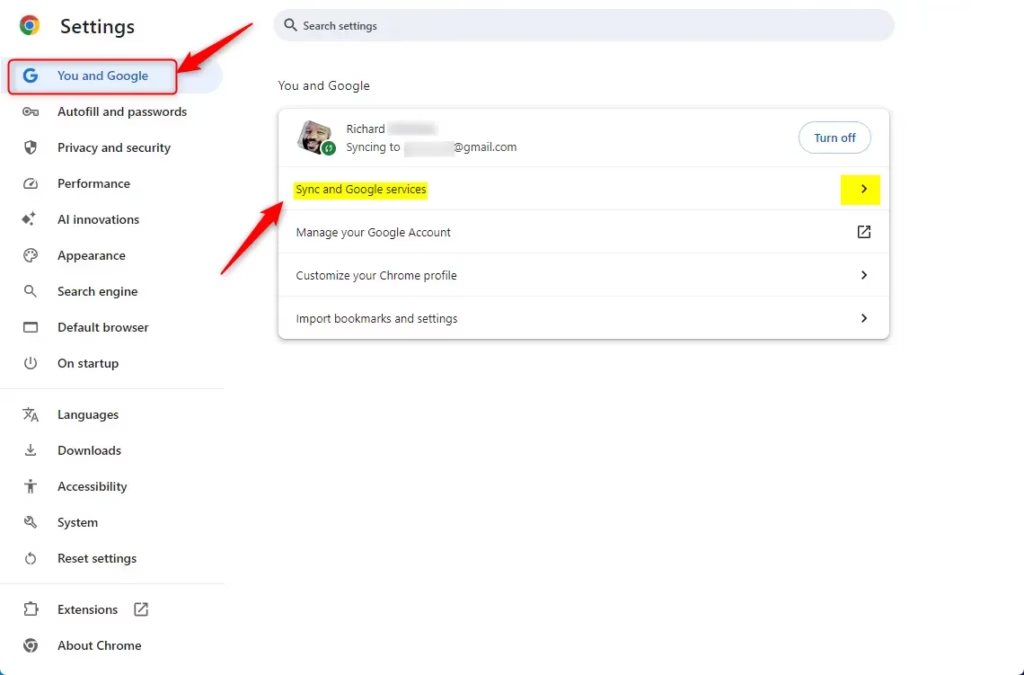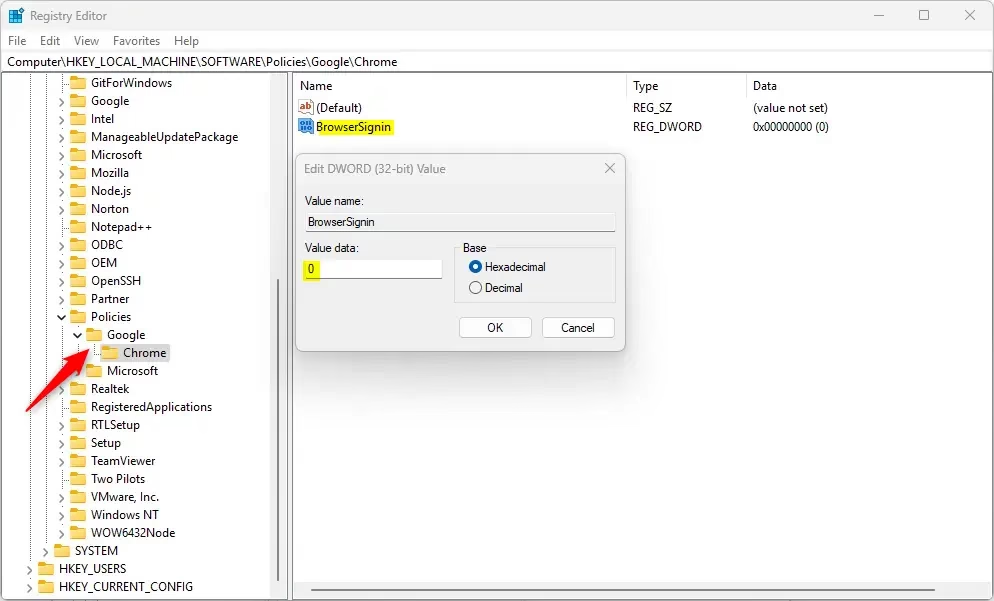This article explains how to enable or disable browser sign-in in Google Chrome.
Google Chrome is a web browser developed by Google that runs on multiple platforms. It shares the same codebase as Microsoft Edge, making the two browsers nearly identical in their basic functionalities.
In the Google Chrome browser, you can use the BrowserSignin policy to control whether users can sign in with their Google account and access account-related services like Chrome Sync.
If the policy is set to “Disable browser sign-in,” the user cannot sign in to the browser or use account-based services. In this case, browser-level features like Google Chrome Sync will be unavailable.
If the policy is set to “Enable browser sign-in,” users can sign in to the browser.
Enable/Disable Browser Sign-in in Chrome
Users can enable or disable the browser sign-in feature in Chrome using the BrowserSignin policy.
Here’s how to do it.
First, open the Google Chrome browser.
Then, click on the Customize and Control (3 vertical dots button) in the top right corner and select Settings.

Click the “You and Google” link on the left menu on the Settings page. Then, select the “Sync and Google services” tile on the right to expand it.

Select the “Allow Chrome sign-in” tile and toggle the button to On or Off to enable or disable signing in to Chrome.

In the pop-up window, click the “Turn off” button to disable sync and personalization, and sign out of your Google accounts.
You may also remove bookmarks, history, passwords, and other settings.

You can close the Chrome settings page when finished.
Enable / Disable Browser Sign-in using the Registry
Another way to enable or disable signing into Chrome is to use the Windows Registry Editor.
First, open the Windows Registry and navigate to the folder key path below.
Remember to back up your registry before making any changes, or create a System Restore point as a precaution.
Computer\HKEY_LOCAL_MACHINE\SOFTWARE\Policies\Google\Chrome
In the registry key paths, if you do not see Google, right-click on the Policies key and create a new key named Google. Do the same for Chrome if it is not listed.
Once there, right-click Chrome > New > DWORD (32-bit) Value and name the new DWORD BrowserSignin.
Double-click and open the BrowserSignin name and set the value using the table below:
0= Disable browser sign-in1= Enable browser sign-in2= Force users to sign-in to use the browser

Delete the “BrowserSignin” name created above to restore the default behavior and allow browser sign-in in the UI.
BrowserSignin
You may have to reboot your computer to apply the changes.
That should do it!
Reference:
Conclusion:
Controlling user sign-in in the Google Chrome browser is essential for managing account access and personalized features. Here are the key takeaways:
- The BrowserSignin policy allows administrators to enable or disable Google account sign-in.
- Users can manage sign-in settings directly within the Chrome settings menu.
- For advanced control, modifications can be made via the Windows Registry Editor.
- Ensuring a backup of the registry is crucial before making any changes.
- Rebooting your computer may be required for the changes to take effect.
By following these steps, you can customize the user experience and maintain security within the browser.

Leave a Reply